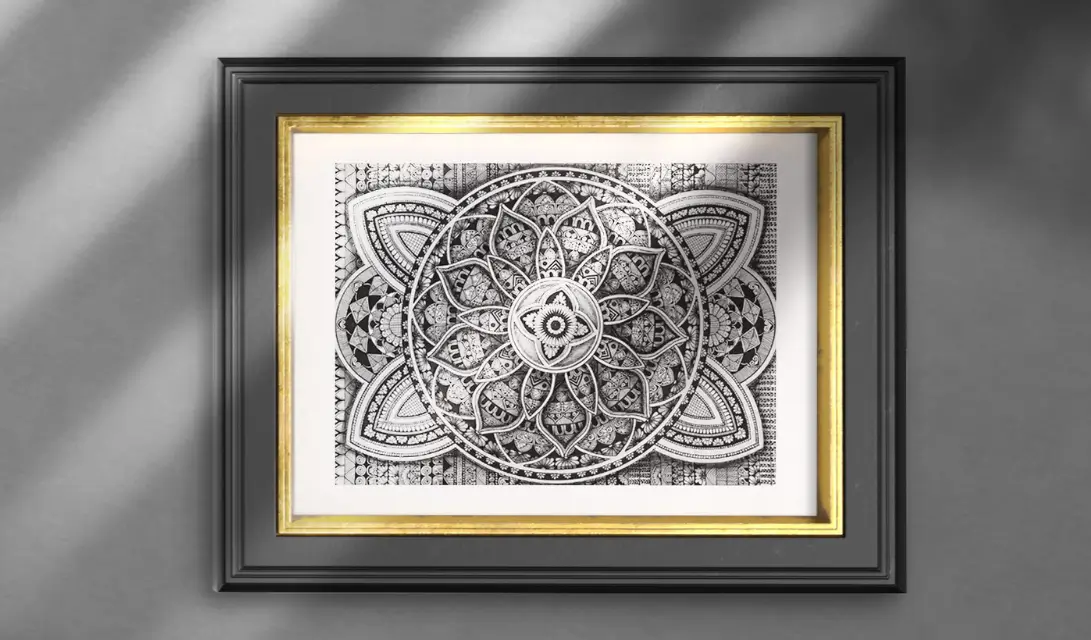In an age that glorifies speed, productivity, and constant noise, stillness has become a rare and radical act. We fill our spaces the way we fill our days—with objects, notifications, distractions. But there are moments when the soul asks for less. For quiet. For pause. For something that doesn’t compete for attention, but instead creates space for awareness.
This is where
mandala art enters—not just as visual expression, but as a gentle offering of
symbolic stillness.
Mandalas: Where Form Meets Silence
The word mandala finds its root in the Sanskrit word for “circle.” Yet, in its true form, a mandala is much more than geometry—it is a
sacred symbol of wholeness, harmony, and the infinite cycle of life. It represents the center point from which everything expands—and the path that draws us back to it.
In
symbolic art, the mandala serves a unique role. Its symmetry doesn’t demand attention. It
invites introspection. Its repetition doesn’t numb the mind—it awakens it to rhythm. Every layer and curve is
purposeful, creating a pattern the eye may follow, but the soul deeply feels. In a space filled with mandala art, silence is not the absence of sound—it is
presence itself.
Stillness as Energy, Not Emptiness
What makes
mandala art different from conventional wall decor is not just its aesthetic, but its energy. These aren’t pieces that fill empty walls—they shift the energy of a room. They
anchor it. They remind the space (and those in it) to slow down.
At
Kasshi, each mandala is created in a space of intentional silence. The process is meditative. Sacred geometry is honored. The five elements—Earth, Water, Fire, Air, and Space—are subtly woven into the form. And before each piece leaves, it is blessed with
pran pratishtha, a sacred ritual to awaken its energy.
The result is
meditative art that holds more than color—it holds vibration. It holds peace. It holds stillness.
Why Silence Matters in Today’s Spaces
Homes today are more than shelter. They are our sanctuaries. They carry the weight of our emotions, our conversations, our energies. And just as the body seeks rest, so does the space.
Mandalas are companions to this need.
Their centeredness creates emotional anchoring. Their balanced structure supports energetic harmony. Without saying a word, they remind us to return to our breath—to be, not do. They become more than art. They become
silent rituals resting on our walls.
Even in the most modern, minimalist rooms, a mandala has the ability to soften the sharpness. It doesn’t dominate. It simply exists. And in doing so, it
creates space—for reflection, for stillness, for self.
The Echo of Silence
People often describe mandala art as “calming,” or say “something about it makes me breathe deeper.” That is not coincidence. That is
resonance.
The mind may not recognize it, but the soul does. The form speaks to the inner geometry of being. The color speaks to emotion. And the stillness it invites is not passive—it is
alive.
This is why those who live with mandalas often describe a shift not just in their space, but in their
inner rhythm. A little more quiet. A little more grounding. A little more peace.
The Return to Center
In a world built to pull us in all directions, mandalas do something different. They draw us inward. Toward calm. Toward clarity. Toward the center of self.
At Kasshi, mandalas are not just painted—they are received, ritualized, and released into the world to hold space for others.
Because stillness is not an absence.It is an art.
And in every mandala, that art lives—quietly, beautifully, and without needing to speak.
Explore mandala art that invites silence into your world.
Let it hold space for your breath, your energy, your stillness.
Visit Kasshi → 


